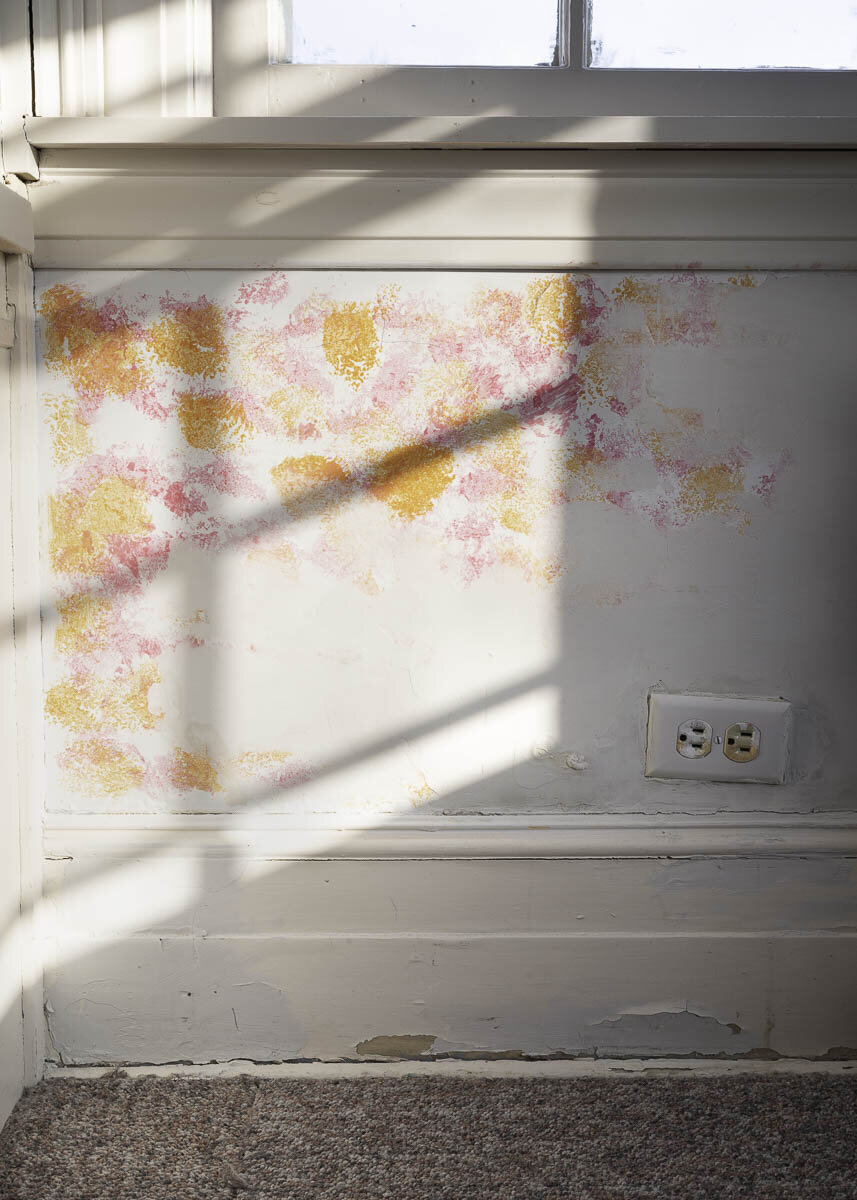Mallory Trecaso
Restorative | The series of photographs in Restorative examines intimate views of home interiors that metaphorically embody my physical self. Emergency surgery left me with new marks, scars, and a patchwork of temporary solutions, and a heightened understanding of my own physicality. I use the familiar subject of the home to talk about my body. Looking through the lens of the home as a metaphor gives the viewer a different framework to view, rather confronting one’s self directly. Like a home, a body records time through markings, imperfections, discoloration, and cracks. Some, like a broken window or a scratch, happen suddenly while others take an extended period to fully manifest on the surface, such as cracks in the structure or human scars.
For the last six years, I have battled Crohn’s, an inflammatory bowel disease. I underwent emergency surgery that I thought would lead to a quick recovery but I emerged from the operating room with an ileostomy, something that saved my life but drastically altered my physical state. The process left me with scars, markings, and tentative solutions both large and small that are constant reminders of the invasion and trauma of surgery.
I find moments in the home that are a record of time, alluding to my lived experience. The body referenced in the photographs is my own, one that is in a restorative process. Imperfections within the houses I photograph symbolize my own physical state. For example, the large crack held together with transparent tape and centered in the frame of Incision breaks the continuous pattern of wallpaper, suggest the discolored scar left on my abdomen. I photograph these moments within the home at the same distance referencing how the distance does not change when looking at my own body.
Both the house and the body are intimate as well as social spaces. The body is a private, personal space but when in contact with another person moves to a social space. Similarly, the home is a private space that one inhabits with some degree of security but when others are invited in, it becomes a social space for interaction. Through my photographs, I metaphorically address private and social space.
Through a repeated vertical orientation, I create a sense of order, structure, and perseverance. The vertical orientation suggests the upright figure, still standing after a physical struggle. Finding order and structure when photographing produces a sense of control that my own body lacks due to my autoimmune disease. Using light and shadow to call attention to the physical imperfections within the home, I create a sequence that references my own state of mind through my journey with Crohn’s disease. Darker images reference time filled with depression, fear, and uncertainty while the brighter images suggest moments that, in retrospect, were pivotal in accepting and coping with Crohn’s.
In making these photographs, I took a deeper look at myself and came to understand that my body is in a restorative state, similar to homes I photograph. I invite viewers to think about their own marks from lived experiences and understand that their imperfections are a record of time. My thesis presents my personal timeline through Crohn’s disease but also opens a more universal conversation about discovering and processing trauma. www.mallorytrecaso.com






















